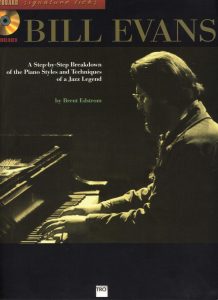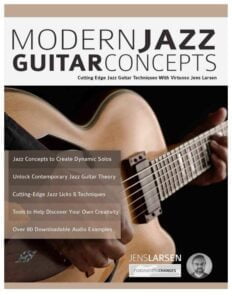Browse in the Library:
Or browse in the categories menus & download the Library Catalog PDF:
Unlocking Your Inner Bill Evans — Piano Stylings of Bill Evans | Piano Lesson (with sheet music to download)
Download many Bill Evans’ and other Giants of Jazz sheet music transcriptions in our Library.

Bill Evans, the most elegant and tragic piano in jazz.
He looked like a Harvard professor on a street corner in Harlem. But even with his withdrawn look and his applied student expression, his glasses and his white skin, Bill Evans turned heads on the New York scene in the mid-1950s. Perhaps the first person who recognized his genius was Miles Davis.
In 1958, the trumpeter joined his band, then made up of authentic jazz giants, from John Coltrane to Paul Chambers. And instead of adapting to the vehement and fast-paced style of the cast, it would be the band that would accommodate the elegant and subtle style of the young pianist. From there was born one of the masterpieces of the genre, Kind of Blue. ‘I planned that album around Bill Evans’ piano,’ Miles Davis would say.

By then, Bill Evans was an exceptional, maturing pianist. The classically trained musician had already recorded New Jazz Conceptions in 1956, the title of which heralds the sophisticated revolution he introduced in the world of jazz. From Miles Davis to Herbie Hancock and Chick Corea, his style left a mark of admiration that extends even today, 40 years after his death, which occurred on September 15, 1980.
Perhaps as a happy synchronicity, the Resonance label announces the November edition of an unreleased record, Bill Evans live at Ronnie Scott’s, a 1968 session at the London club of the same name, together with Eddie Gomez and Jack DeJohnette. This formation lasted only six months, during which time they recorded Bill Evans at the Montreux Jazz Festival, the same year, an album that would win the Grammy.
Born in New Jersey in 1929, William Evans received his first piano lessons sitting in a corner on the floor, watching his brother Harry learn from him. When class was over and the room was empty, Bill would sit at the keys and play what Harry had played. He was six years old.
Owner of a precocious and superlative talent, Evans also studied violin, flute and piccolo. He quickly acquired the ability to read music. His repertoire came from classical music, but at the age of 12 he was introduced to jazz and was attracted by its powerful nocturnal light.
Already in high school, he formed a band and began playing at social events and small clubs. His biggest influence at the time was Nat King Cole, “one of the swingiest, most beautifully melodic jazz improvisers and pianists jazz has ever known,” he said.
Thanks to a scholarship, he entered Southeastern Louisiana College in Hammond, 80 kilometers from New Orleans. At university, he studied Mozart, Beethoven and Chopin, Debussy, Ravel and Gershwin, without leaving his passion for jazz. In such a way that the European tradition would be the basis of the refined interpretation that it would contribute to the genre.
Upon graduation, in 1950, the head of the Music Department wrote several letters of recommendation. ‘We brought him in four years ago on a piano scholarship,’ one of them said, and he ‘became such a magnificent pianist that he finally played Beethoven’s Third Piano Concerto.’ He added, “Also, his performance is so easy that you can hardly believe your ears. He covers the keyboard with a sense of rhythm and harmony and speed and orchestral balance that is remarkable.”
Best Sheet Music download from our Library.
Browse in the Library:
Or browse in the categories menus & download the Library Catalog PDF:
